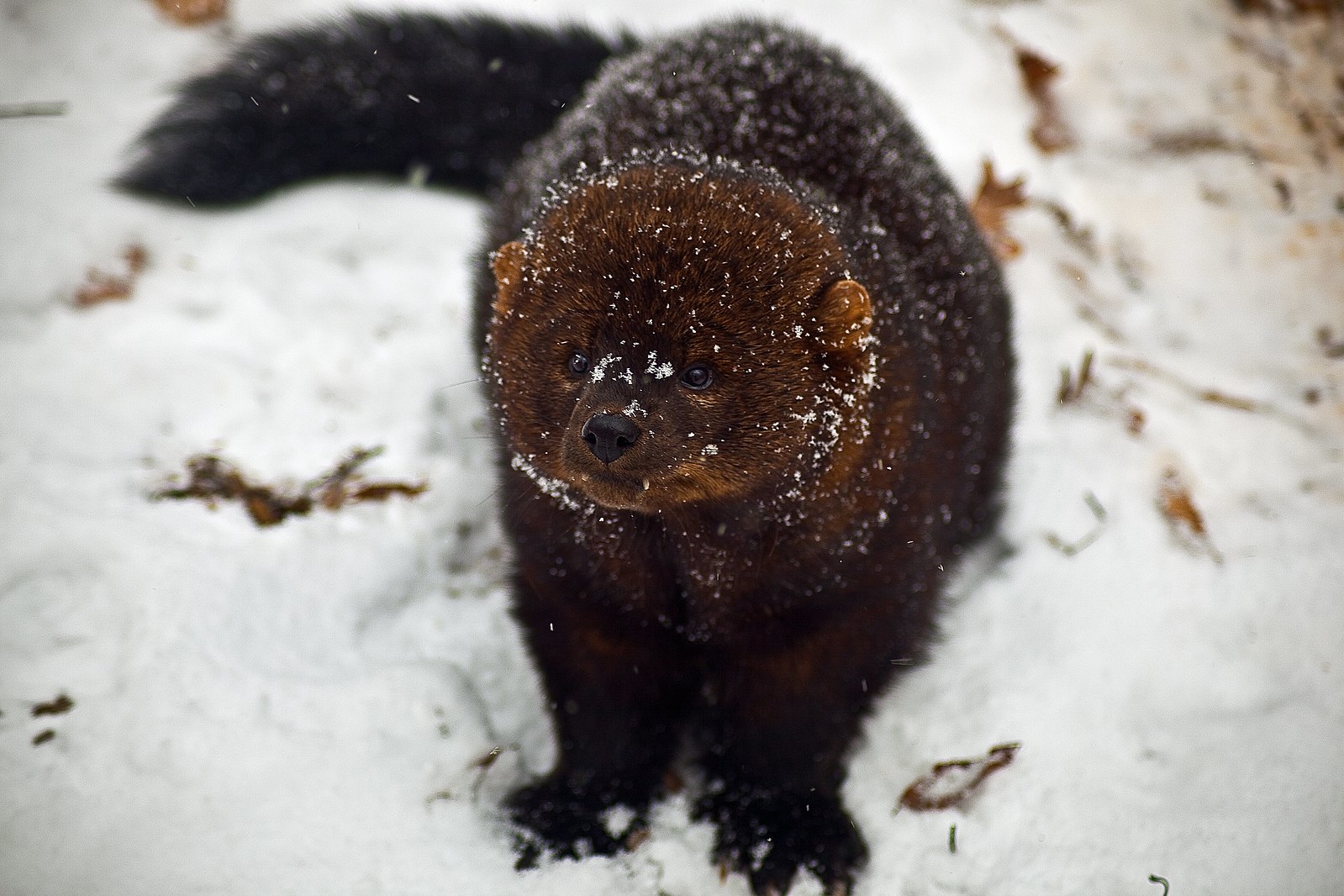
This week’s animal is an identification request from my partner. He was biking around Massachusetts when he saw a sign that said, “Warning: fisher cats.”
Which begged the question: what is a fisher cat??
He asked me if I knew what they were when I got home; I said I did, but I honestly only had a rough idea. So, I decided to dig a little deeper into these animals!
Fisher cats (Pekania pennanti) are small carnivorous mammals. They’re native to North America and can be found in Canada and the northern United States.
Fisher cat, however, is an inaccurate name, and just ‘fisher’ is a better. Why? Well, although they are roughly cat-sized, these animals are not related to cats at all and are instead members of the mustelid (or weasel) family. They are closely related to the American marten and the Pacific marten.
What’s in a name?
There are two large issues with the fisher name. First, as I discussed above, they aren’t really cats.
Second: fishers don’t fish. Although fishers are omnivores and eat a variety of small mammals and fruits / mushrooms, fishers only very rarely eat fish.
So, why the name ‘fisher’? It seems that ‘fisher’ is a corruption of the French word ‘fiche,’ which is a name for a small species of weasel found in Europe, the European polecat. Early European settlers likely saw fishers and incorrectly identified them as the animals they were familiar with back home.
Slinky little guys
So they don’t usually eat fish, but fishers are great hunters of other animals. Their hunting prowess is in part due to their agility. Fishers have no issue hunting and leaping around in trees. They have feet with retractable claws, giving them a good grip; fishers also have highly mobile ankle joints and can rotate their hind paws almost 180 degrees. This high mobility lets fishers descend from trees head-first (one of the relatively few mammal species who can do so).
Winter doesn’t stop fishers, either. They have large feet which, like snowshoes, let them walk easily on top of the snow. The hind paws also grow coarse hairs between the foot pads and toes, which give the fisher additional traction when walking on slippery surfaces.

And if their prey bolts down a hole? No worries – fishers can elongate their body to chase after their prey in holes and hollow trees.
The Porcupine Hunter
So, the fisher is a good hunter. But it’s true claim-to-fame is that the fisher is one of the only animals who can successfully hunt a porcupine.
This is where a fisher’s agility comes in handy. They will first exhaust porcupines by running circles around them. Once the porcupine is sufficiently tired out, the fisher will bit its face. After enough bites, the porcupine will eventually bleed out and the fisher can feast.
Of course, no fisher is completely immune from getting quilled in the face at least once in their lives. Still, fishers seems to be pretty immune to the aftereffects of quilling. Unlike other animals, they seems to be able to fend off the potential life-threatening infections of a porcupine quill in the face.
No, they don’t scream
Some people say that fishers make blood-curdling screams at night (like a caterwauling cat – another explanation for the term fisher cat?). The story goes that fishers make this sound when they’re ready to attack.
But that’s all it is – a story. I’m not sure how fishers got linked to this sound, but it’s almost certainly a red fox, not a fisher. Fisher scientists say that the typical fisher sounds are chuckles and growl-like vocalizations instead.
Beautiful fur
Fishers have beautiful fur that is highly valued by trappers. In fact, fishers were hunted to extinction in some parts of their range.

Trappers did try turning to fur farming fishers, but their reproduction made this difficult. Fishers have delayed implantation of their embryos. Females will mate in late spring, but then the fertilized embryo (called a blastocyst at this stage of development) stops developing. Instead, the blastocyst just hangs around for 10 months. Active pregnancy finally begins in mid-February, and kits are born after about 50 days. But since farmers didn’t know about delayed implantation in fishers, all they saw was females mating but not giving birth. It’s hard to have a successful fur farm if you don’t know when babies are going to be born!
So, it was looking a little rough for fishers for a while, but this story has a happy ending. Thanks to reintroduction, habitat restoration, and conservation efforts, fishers are making a comeback in most parts of their historic habitat. This also means that you are more likely to see a fisher now than you were 100 years ago, as these fearless animals grow in population and continue to explore more areas of their range.
Who knows? If you live up north, you might see a fisher yourself one day.
Resources

Leave a Reply